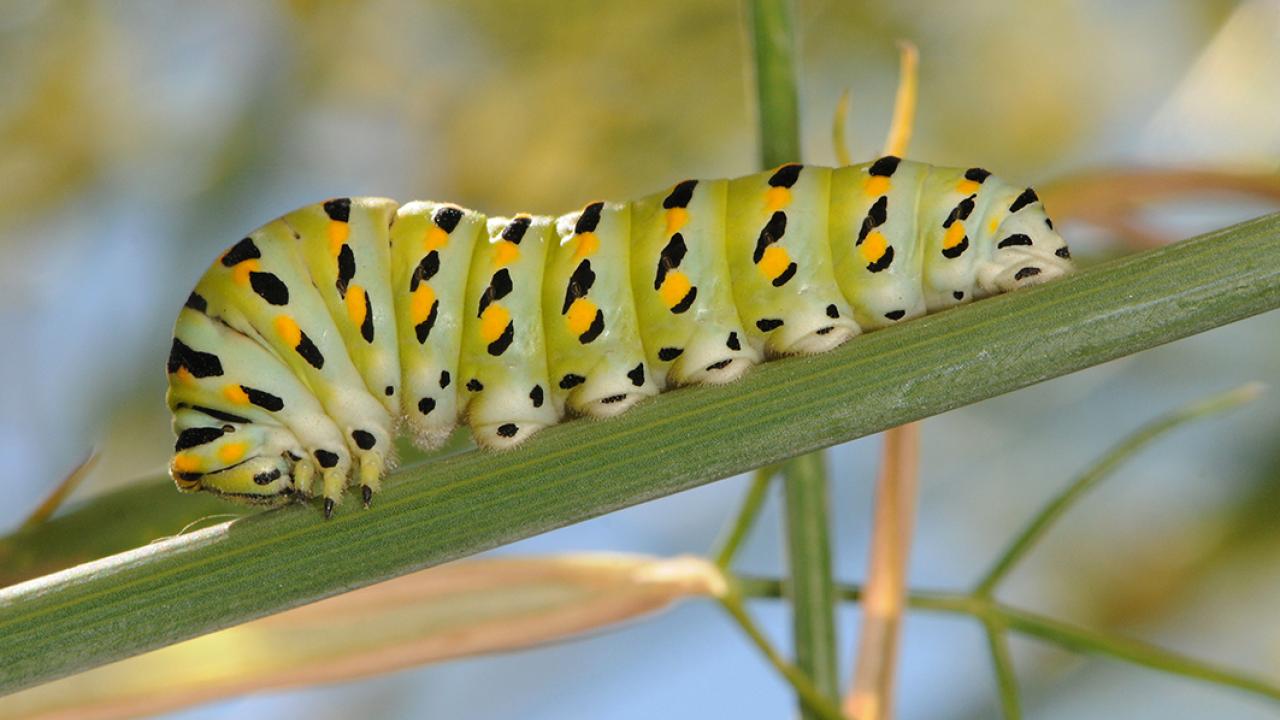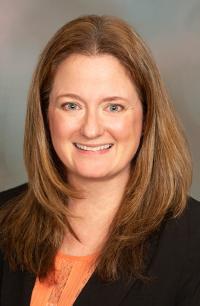
'Eating Caterpillars Will Not Make Us Stay Young'
Bruce Hammock, Christophe Morisseau Present Joint-TEDx Talk on Groundbreaking Research

“Eating caterpillars will not make us stay young. However, research that started in insects and continues in mammals, has the potential to make us feel younger as well as slowing the aging.”
So noted UC Davis distinguished professor Bruce Hammock and research scientist Christophe Morisseau of the Hammock lab in their joint-TEDx presentation, “Staying Young, Feeling Younger, and Slowing Aging,” involving their groundbreaking research on Alzheimer’s and Parkinson’s diseases in collaboration with UC Davis School of Medicine (SOM) faculty researchers.
The occasion: SOM’s 2025 Convergence Research Celebration, held recently in the UC Davis Conference Center. Hammock, who joined the UC Davis faculty in 1980, holds a joint appointment with the UC Davis Department of Entomology and Nematology and the UC Davis Comprehensive Cancer Center. Morisseau joined the Hammock lab in 1996 after completing his doctorate in France.
The two were introduced as “extraordinary (scientists) whose collaborative research with UC Davis School of Medicine faculty have made this past year such a success.” SOM chronicled “another record year of extramural funding," noting that "collaborations with faculty from schools and colleges across the UC Davis campus are a significant factor.”
Morisseau delivered the joint presentation, focusing on "50 Years of Interdisciplinary Collaboration, from Insect Metamorphosis to a Pharmaceutical in the Clinic." He recounted how back in the 1970s, Hammock and fellow graduate student Sarjeet Gill (now a UC Riverside distinguished professor emeritus) were working in the UC Berkeley lab of John Casida when they co-discovered that a key enzyme--soluble epoxide hydrolase or sEH--degrades a caterpillar's juvenile hormone, "allowing it to move from the larval stage into an adult insect."
Research shows that "when the enzyme is inhibited, it successfully reduces inflammation, eliminates chronic pain, and blocks the symptoms and progression of Alzheimer’s and Parkinson’s in rodent models and human-derived stem cells," Morisseau said.

Hammock’s sEH inhibitor research now spans 50 years. That research has led to experimental drugs that target such diseases as pain, diabetes, heart disease, Parkinson’s, Alzheimer's, and cancer.
“There’s no obvious connection between bio-medical research and entomology,” Morisseau told the crowd. “A lot of times science advances by applying to one field what you’ve learn in another field. This is what happened 50 years ago when Bruce was a graduate student at UC Berkeley.”
Morisseau explained that the juvenile hormone that Hammock studied in the Casida lab “keeps larvae young."
"In caterpillars, this hormone is high," he said. "At a certain age and size, the hormone is metabolized to zero; the larvae can then go through metamorphosis, and, as an adult, flies away. Bruce thought that perhaps there’s such a hormone in mammals to keep us young. In mice liver, he found an enzyme that metabolizes juvenile hormone that he called soluble epoxide hydrolase, but no juvenile hormone. Thus, no easy way to stay young."
“In insects, staying young is not a good thing,” Morisseau said. “Blocking juvenile hormone metabolism is a common strategy used in insecticides, especially to control mosquitoes.”
“There are many ways to feel younger," Morisseau shared, "but, as we age, reducing damage and pain to our body is a sure way to feel younger. Simply put, there are two kinds of pain. There’s inflammatory and neuropathic. With inflammatory pain, an injury--even a small bump--creates local inflammation with local discomfort and pain. In neuropathic pain, when nerves are damaged, the neurons send uncontrolled signals perceived as pain.”
“Drugs affect all of our nerves and thus affect our function,” he said. “Also, they do not target the problem: neuron damage. Therefore, when a drug’s effectiveness wanes, the pain returns.”
“After 20 years and my coming to America,” Morisseau quipped, “Bruce got some good inhibitors of soluble epoxide hydrolase, the enzyme he found during his PhD studies in the Casida lab. With them in hand and with numerous collaborators, especially at the UC Davis School of Medicine, we explored its role.”
“We found that these inhibitors can resolve inflammation, thus reducing inflammatory pain, and, more surprisingly, they can reduce stress and damage to neurons, thus reducing neuropathic pain without affecting our brain function. Therefore, with the enzyme inhibitor targeting the soluble epoxide hydrolase, we can reduce pain resulting from many different causes--which makes us feel younger.”

Hammock conceived of EicOsis, a Davis-based company he co-founded in 2011, to “provide a new alternative to treat pain and inflammation without the side effects of opioids and other standard pain therapies” and to bring drug compounds to the market. The company derives its name from eicosanoid, “the major backbone of chemical mediators in the arachidonate cascade," according to CEO Cindy McReynolds, a UC Davis doctoral alumna (toxicology and pharmacology), who studied with Hammock. “It symbolizes the epoxide group in chemistry, which is key to the anti-inflammatory chemical mediators and where the biochemical target called soluble epoxide hydrolase works.”
As co-founders, Hammock and McReynolds continue to play key administrative and scientific roles in EicOsis Human Health LLC . Hammock, former CEO, has transitioned to chief scientific officer and chair of the board of directors. A drug candidate is now moving through human clinical trials.
In discussing the effects of injuries and the aging process, Morisseau told the Conference Center crowd: “When our body is injured, even small injuries result in some cell death, resulting in slow loss of function of our organs. This is part of the aging process of our body. With the soluble epoxide hydrolase inhibitors, by reducing inflammation and cellular damage we can reduce the amount of cell death following injury, and thus reduce the process of aging. Right now, with collaborators at the UC Davis School of Medicine, we are investigating the possibility to slow the pathological aging of the brain in Alzheimer's and Parkinson's. We are looking at slowing the progression of the diseases. Animal models experiment results are encouraging, and the UC Davis School of Medicine is helping us to move it toward treating patients.”
In his concluding remarks, Morisseau returned to caterpillars. “Eating caterpillars will not make us stay young," he quipped. "However, research that started in insects and continues in mammals, has the potential to make us feel younger as well as slowing the aging.”
Others delivering TEDx talks were Sean Collins, College of Biological Sciences; Chen-Nee Chuah, College of Engineering, Eliza Bliss-Moreau, College of Letters and Science, Kent Leach, School of Medicine; and Pamela Lein, School of Veterinary Medicine.
Bruce Hammock
Hammock is known for his expertise in chemistry, toxicology, biochemistry, entomology and human health research. He is a fellow of the National Academy of Inventors, the National Academy of Sciences, the California Academy of Sciences, and the Entomological Society of America. At UC Davis, he received both the Academic Senate's Distinguished Teaching Award and the Faculty Research Lectureship. In 2020, UC Davis Chancellor Gary May awarded him the first-ever Lifetime Achievement Award.
Christophe Morisseau
Morisseau is known for his research on protein purification, enzyme kinetics, enzyme inhibition, high throughput assays, chemical library screening, organic synthesis, cell and cultures, and enzymatic reaction. He holds two degrees from France: a doctorate in biochemistry and organic chemistry mechanisms from the University of the Mediterranean, now the University of Aix-Marseille, and a master’s in food science from ENSBANA, now Agro-Sup Dijon.

Cindy McReynolds
McReynolds has researched the biological activity of lipid mediators for the past 18 years. Her current efforts “focus on understanding the roles of lipid mediators in inflammation especially relating to pain and degenerative disease.” At UC Davis, she served as the scientific program manager (2010-2017) for the Center for Integrative Toxicology, and as a graduate student researcher.
EicOsis won the 2010 "Sacramento Region Innovator of the Year” in the medical health/biopharmaceutical category of the annual Sacramento Region Innovation Awards Program. The program “recognizes the area's vibrant innovation community—from emerging to established companies—and their breakthrough creations,” according to sponsors Stoel Rives LLP, Moss Adams LLP and the Sacramento Business Journal. EicOsis is now receiving financial support from the Michael J. Fox Foundation to further its Parkinson’s disease research.
For donors seeking to support the Hammock-Morissseau team project, contributions can be made to the Alzheimer's and Parkinson's Disease Research Fund, according to Cari Dubois-Wright, director of development, UC Davis College of Agricultural and Environmental Sciences. She may be reached at caduboiswright@ucdavis.edu for further information.
